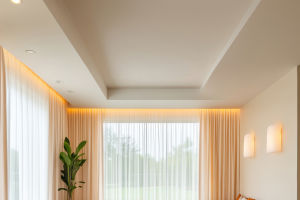Ever look at your living room and think, “Why doesn’t this feel quite right, even with nice furniture?” Often the issue isn’t what you’ve bought, but how it’s arranged.
A surprisingly simple designer trick—the 2:1 seating principle—can turn a scattered room into a stylish, welcoming conversation zone.
Why Seating Matters
Choosing a sofa and a couple of chairs is the easy part. The real challenge is arranging them so the room feels curated instead of random, and relaxed instead of cramped. Good seating layout shapes how people move, talk, and even how confident you feel about your home when guests step in.
A thoughtful plan creates a natural focal point, clear walking paths, and seating that encourages face-to-face conversation. When pieces are pushed against walls with a lonely coffee table in the middle, the room can feel disconnected, no matter how expensive the furniture is. That’s where the 2:1 idea comes in.
The 2:1 Rule
Designers often lean on an easy, almost foolproof formula: two chairs and one sofa. This 2:1 ratio is the backbone of countless living rooms because it balances comfort, function, and visual harmony. It works in both compact city spaces and large open-plan rooms, and it adapts well to different styles.
The classic layout looks like this: the sofa becomes the main anchor, while the two chairs sit side by side opposite it, angled slightly inward. This creates a loose U-shape that feels naturally social. Everyone can see and talk to each other without twisting awkwardly, and the arrangement instantly looks purposeful.
How To Place
To make this layout comfortable, aim for a relaxed conversation distance. The chairs should sit close enough to the sofa that people can chat without raising their voices, but far enough to leave breathing room. A gentle inward angle on the chairs subtly invites people into the seating area.
Between the sofa and chairs, a coffee table should act as the anchor. It ties the group together and gives everyone a convenient surface for books, candles, or a snack. Leave enough space to walk around the table without bumping knees, ideally allowing a clear route through the room rather than a dead end.
Odd Or Even?
Because the 2:1 rule uses three pieces, it naturally creates an odd-numbered grouping, which often feels relaxed and dynamic. However, designers also use even numbers when a more formal or traditional atmosphere is desired. Think of two matching sofas facing each other, flanked by pairs of identical chairs.
Even-numbered arrangements emphasise symmetry and structure, while odd-numbered layouts feel a bit more casual and collected. The right choice depends on the mood of the space, the architecture, and how you use the room. A family hangout might benefit from the ease of 2:1, while a formal sitting room might lean on symmetry.
It also helps to remember that not all seats are equal. A single armchair usually holds one person, while sofas can seat anywhere from two to five, depending on length and depth. Before buying another chair “just in case,” think about how many people you regularly host and how often every seat will realistically be used.
Too many unused seats can make a room feel crowded and underused at the same time. Instead of filling every spare corner with upholstery, you might dedicate some space to a music setup, a reading nook with shelving, or closed storage to keep visual clutter under control. Purpose beats sheer quantity every time.
Room Size Tips
Good news: the 2:1 principle isn’t only for small rooms. In a large living room, the ratio simply multiplies. Designers might repeat the basic trio to form two seating zones or add variations such as two pouffes with a sofa, or a bench paired with a pair of slim chairs.
For large spaces, the key is to keep each 2:1 grouping feeling like its own conversation area, with enough distance between clusters to move comfortably. Rugs can help define each zone, and side tables or floor lamps can give every seating group a clear purpose, whether it’s reading, chatting, or relaxing alone.
In compact rooms, the rule still applies—just scale everything down. Swap an oversized sectional for a tailored two-seater and choose chairs with open bases or slimmer arms. A round or oval coffee table helps circulation, and floating furniture slightly off the walls often makes the room feel airier than lining everything up against the edges.
Mix Or Match?
A common question is whether the two chairs need to match each other or the sofa. The short answer: not necessarily. Many designers love pairing different chair styles as long as they share a thread, such as similar height, complementary shapes, or related colours. This keeps the room interesting without feeling chaotic.
Some projects do call for matching chairs, especially in more structured interiors. When everything is perfectly symmetrical, contrast can come from cushions, a patterned ottoman, or bold artwork rather than the seating pieces themselves. Balance is the goal, not rigid rules. Harmony can come from repetition or from a carefully controlled mix.
For an inviting, layered look, consider skipping complete furniture “sets.” Instead, mix pieces collected over time: a modern sofa with classic armchairs, or a neutral couch paired with two colourful accent chairs. The trick is to repeat a few elements—perhaps metal finishes, wood tones, or fabric textures—so the room feels cohesive even when items differ.
In the end, the “perfect” living room layout is less about strict formulas and more about how the space feels and functions for daily life. The 2:1 principle simply offers a reliable foundation you can customise. How does your current seating setup measure up, and what small change could you try this week to make conversations flow more easily?


